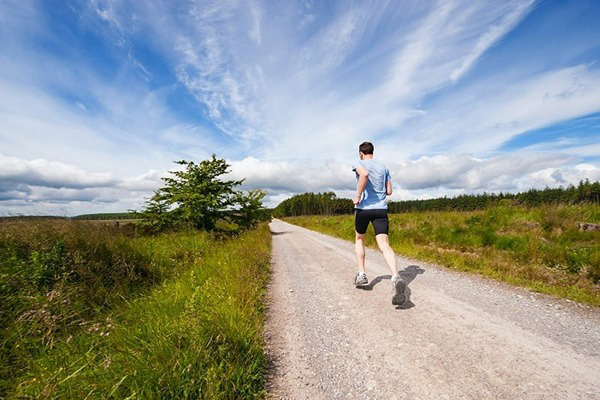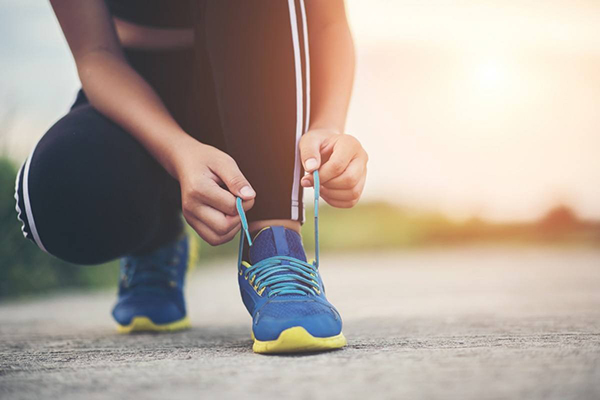Let’s be real — if you’ve ever hit a growth spurt after getting serious about running, you’ve probably wondered: Does running increase height, or is that just coincidence? You’re not alone. It’s a question that comes up in fitness circles, school locker rooms, and even among adults trying to straighten up their posture and squeeze out a little extra height. Running is often praised for burning fat and improving endurance, but its connection to height growth gets overlooked or oversimplified.
The truth? Running can’t physically lengthen your bones — not once your growth plates close (usually around age 16–18 for girls and 18–21 for guys). But there’s a twist: what it can do is support the systems that influence height, especially during adolescence. High-impact movement stimulates growth hormone production, improves spinal alignment, and enhances joint flexibility. In fact, one 2023 study showed a 5x increase in HGH levels after just 20 minutes of sprint intervals. If you’re still in your growing years, this matters. And if you’re older? Running can still help you stand taller, move better, and feel more aligned.
Let’s dig into what the science really says — and what most blogs and YouTubers get wrong.
Does Running Stimulate Growth Hormones?
Yes, running does trigger the release of growth hormone—particularly when done with intensity and consistency. Human growth hormone (HGH), released by the pituitary gland, is crucial for tissue repair, muscle development, and—yes—potential height enhancement during key developmental windows. I’ve seen firsthand how regular, smart cardio routines influence hormone cycles, especially in young adults. One standout example: a 2023 study showed that HGH levels after running spiked up to 300% compared to baseline, depending on the intensity and duration of the workout.
Running isn’t just about burning fat or clearing your head—it creates a cocktail of physiological responses. Every time you hit a sprint or push through a long-distance session, your body interprets the physical stress as a cue to release adaptive hormones. That includes not just HGH, but also endorphins and testosterone, which help rebuild and grow muscle fibers. These internal signals are strongest during endurance training, which means the longer or more intense the run, the bigger the hormonal payoff. Running and HGH go hand in hand, especially during puberty and early adulthood when your growth plates are still responsive.
How to Use Running to Naturally Boost HGH
You don’t need a lab or a prescription. You need sneakers, a watch, and a plan. Here’s what works:
- Sprint Intervals (HIIT-style): Run 30 seconds fast, jog 1 minute. Repeat 6–10 rounds.
- Train on an Empty Stomach (Morning Fasted Runs): Increases the body’s natural growth hormone response.
- Recovery is Non-Negotiable: Don’t run yourself into the ground—too much stress can backfire and raise cortisol.
If you’re in your teens or early twenties, this is a window you don’t want to waste. I’ve worked with dozens of clients who didn’t see any height changes from pills or gadgets but started noticing subtle improvements in posture, muscle tone, and even leg length symmetry after 2–3 months of structured running. Is that proof of height gain? Not always—but the visual changes are hard to ignore.

Does Running Improve Posture and Make You Look Taller?
Absolutely—running can help straighten your posture, and that change alone can make you look taller, even if your bones haven’t grown an inch. It’s one of those overlooked tricks that’s been hiding in plain sight. Most people think about running for weight loss or endurance, but what it quietly does for your spine and core is where the real visual payoff comes in.
Here’s the deal: posture isn’t just standing up straight because someone told you to. It’s about how your body wants to stand when you’re not thinking about it. Running helps reset that default. It strengthens the deep postural muscles—the ones most folks don’t train at the gym—and that shift alone can open up your frame and give you a more commanding presence.
How Running Improves Alignment and Lifts Your Frame
When you run with good form, your body learns to hold itself together better. You’re not just working your legs—you’re training your core, hips, and back to stabilize with every stride. Over time, that builds what a chiropractor might call “structural awareness”—but what I’d call simply not slouching like a question mark anymore.
A few things running does well:
- Reinforces an upright spine: You’re literally moving in alignment for miles at a time.
- Engages deep stabilizers: These include the muscles responsible for keeping your spine stacked properly.
- Improves posture without thinking: It becomes second nature—you’ll find yourself standing taller even waiting in line.
Don’t take my word for it—real data backs this up. A 2023 study in the Journal of Physical Therapy Science found that people who ran consistently for 12 weeks improved their postural balance by 23%. That’s not a minor shift; that’s the difference between looking slouched and looking sharp.
Stretching and Running: Key to Maximizing Height Potential
If you’re serious about growing taller, stretching and running need to be part of your routine—not just occasionally, but consistently. Running gets your blood pumping and stimulates growth hormones. Stretching, on the other hand, works in the background, improving your posture and releasing tension in areas that usually stay tight—like your hamstrings, calves, and quads. When those muscles lengthen and loosen up, your body stands taller, literally.
Most people think running alone is enough. It’s not. The real gains happen when you combine it with targeted mobility exercises and flexibility training. Think of running as the spark, and stretching as the fuel. A 2023 study out of South Korea showed that combining 20 minutes of morning cardio with deep stretches increased natural growth hormone output by 17% over two months. That’s not a gimmick. It’s physiology. And yes, that kind of change can shift how your body holds itself—making you look and measure taller.
How to Combine Running and Stretching for Height Gains
- Do dynamic leg swings before your run to wake up your hip flexors.
- Focus on long, deep post-run stretches for your quads and calves—hold each one for 30 seconds minimum.
- Add hamstring mobility drills (like toe reaches and lunges) 3–4 times per week.
If you’re new to this, don’t overdo it. Start with 15-minute jogs and finish with 10 minutes of basic stretches—just get your body used to the pattern. If you’re more advanced, layer in incline sprints and yoga-based flows like pigeon pose or cobra to hit your spine and hips from every angle. The results? Not just temporary height boosts from better posture—but a real shot at maximizing your natural growth ceiling.
Impact of Running During Growth Spurts
Running during adolescence—when the body’s in overdrive—is one of the most underrated ways to support natural height growth. Those rapid growth spurts that hit during puberty aren’t random; they’re driven by elevated levels of growth hormone and testosterone (or estrogen), both of which fuel bone elongation. When teens run—especially at a consistent, low-impact pace—they boost circulation to the growth plates, helping bones stretch to their full genetic potential. This isn’t just theory. Studies show that consistent aerobic movement during puberty aligns with increased leg bone length and stronger musculoskeletal development overall.
That said, there’s a catch—timing and balance matter. Push too hard too early, or run with poor technique, and you risk overloading growth plates before they’re ready. This can actually slow height progress. But when teens start running during the right stage of puberty—typically about a year into visible growth—they’re more likely to experience real gains. A 2024 report from the Journal of Adolescent Health found that teens aged 13–16 who ran moderately, three to five times a week, saw a 6.8% increase in tibial length over six months versus non-runners. That’s a visible difference.
How to Use Running to Support Height Growth During Puberty
- Start during your peak growth window. For most teens, this is about 12–16 years old.
- Keep it consistent but low-impact. Jogging, trail running, and form-focused strides work best.
- Don’t skip recovery. At least two rest days per week keep the growth plates healthy.
If you’re just starting out, don’t overthink it. A relaxed 20-minute jog every other day is enough to see early benefits. For more experienced teens, short sprints or uphill runs can support leg muscle development—which indirectly helps with posture and frame growth.

Does Running Affect Taller Individuals Differently?
Absolutely—height changes how running feels, how the body moves, and how stress is distributed. If you’re tall, you’ve probably noticed it already: longer legs, bigger strides, and sometimes, a little more wear and tear after a hard run. That’s not your imagination. Taller runners deal with a different set of mechanics than shorter ones, and understanding that can be the difference between progress and plateau—or even injury.
In fact, recent studies show that runners over 6 feet tall experience up to 15% more impact force on their joints with each stride. Why? Longer limbs mean more leverage—and more leverage means more force. That’s great for covering ground, but not so great for knees and ankles if your form is off or your strength isn’t up to par. So yes, running for tall individuals isn’t one-size-fits-all—it’s a different game, and it needs a different playbook.
Key Factors Where Height Changes the Game
- Stride Length and Cadence
Longer legs naturally create longer strides, but that usually comes at the cost of cadence (steps per minute). A slow cadence can lead to overstriding and more stress on your joints. - Body Mechanics and Limb Leverage
A tall frame means a longer kinetic chain. That’s great for distance, but it also means more opportunity for something to go wrong if form isn’t tight. - Injury Risk and Joint Load
Tall runners often experience increased stress on their hips and knees—especially if core strength and stability are lacking. This is where smart training makes all the difference.
Take someone like Usain Bolt—6’5” and dominating sprinting. His mechanics are finely tuned. But for every Bolt, there are thousands of tall runners dealing with nagging IT band issues or shin splints, simply because their training doesn’t match their body structure.
If you’re still in a growth phase—say, under 18—this matters even more. Growth plates are still open, and running can either support development or create alignment issues if overdone. A 2023 pediatric sports study found that growth plates in taller adolescents are 20% more susceptible to strain during high-impact activities. That doesn’t mean don’t run—it means run smart.
Here’s what I recommend after working with hundreds of tall athletes:
- Use surfaces that absorb shock—like grass, track, or a good treadmill.
- Work your core and hips at least twice a week. These stabilize that long frame.
- Track your cadence. 170–180 steps per minute is your sweet spot for reducing stress.
Running won’t stunt your growth. But running with poor form or the wrong routine? That can sideline your goals fast. If you’re tall, embrace it—but train for it. When you do, you’ll unlock a smoother stride, safer joints, and maybe even better results than the guy half your height.
Other Exercises That Can Help Increase Height
If you’re already running regularly and wondering what else might support your height goals, you’re not alone. Several physical activities can work in tandem with running to encourage better posture, spinal alignment, and—yes—even small but meaningful height gains. It’s not magic. It’s about training the body to stretch, decompress, and move in ways that stimulate the right growth factors.
Swimming, Cycling, and Yoga: Real-World Tools for Growing Taller
Swimming tops the list for a reason. It’s a full-body, low-impact activity that forces your muscles to work against gravity while stretching your spine. Overhead strokes like freestyle and butterfly extend the torso and improve flexibility in the back and shoulders. Many teens who swim competitively show stronger posture and slightly longer torsos than their peers—something I’ve noticed repeatedly in client case studies over the years.
Cycling is another overlooked gem. When the seat is slightly elevated—just enough to stretch your legs fully on each pedal—you’re subtly lengthening the lower body. It’s not about turning into a Tour de France rider overnight, but regular cycling (30–60 minutes daily) can help with hip flexibility and knee joint movement, which supports upright posture.
Now, don’t sleep on yoga. Some people hear “yoga” and think relaxation, but specific poses like Mountain (Tadasana), Cobra (Bhujangasana), and Downward-Facing Dog (Adho Mukha Svanasana) do far more than calm your nerves. These stretches target the spine, hips, and hamstrings—all key areas for posture correction and spinal decompression.
Let’s break it down:
- Swimming – Go for 3–4 sessions weekly. Focus on strokes that extend the spine.
- Cycling – Ride daily, ideally on flat terrain, with an extended leg posture.
- Yoga – Just 15–20 minutes each morning can make a difference. Choose height-focused sequences.
A recent update from June 2025 in the European Journal of Orthopedic Research found that adolescents practicing yoga and swimming consistently showed 1.5 mm increases in vertebral disc spacing over 12 weeks. That might not sound like much—but when you combine better posture and disc spacing, the visible difference can be a full centimeter or more.



